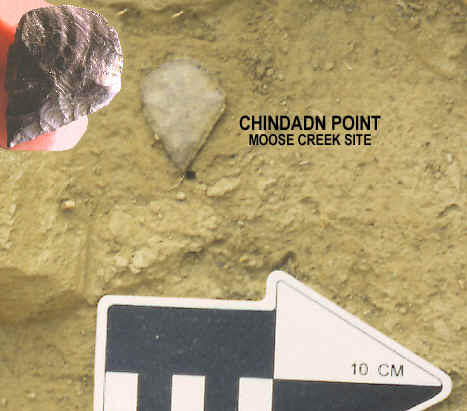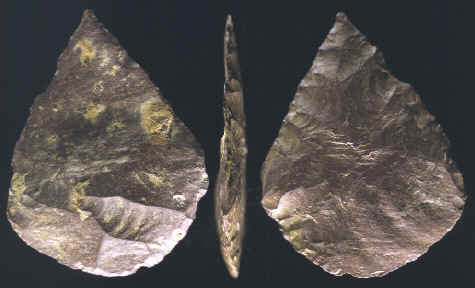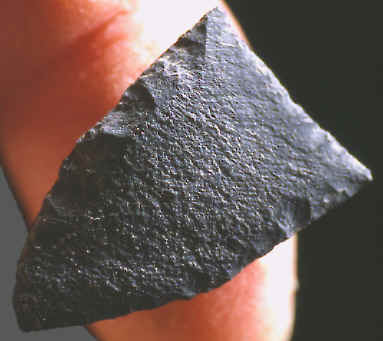|
|
|
A fairly large number of artifacts were discovered in component I. The most important was a diagnostic Chindadn projectile point. This thin teardrop-shaped point was made from non-local purplish-red chert. It was discovered approximately 2 meters (6.5 feet) from the hearth. It measures 34 mm (1 5/16 inches) long, 25 mm (1 inch) wide and 4 mm (3/8 inch) thick. |
|
|
|
|
The most numerous artifacts found in the Nenana occupation level was a large number of flakes scattered over a wide area. Other artifacts found include two large cobbles, two side-scrapers, a biface, a scraper-plane, a flake core, a hammerstone and a subtriangular projectile point. The two large cobbles showed pitting that indicate they were probably used as anvils. The ends of the hammerstone was battered and parallel striations can be seen on its surface. These wear patterns suggest that it may also have been used to grind platform edges during stone tool manufacture. |
|
|
|
|
Two other Nenana sites in the Nenana Valley have produced Chindadn points. One is Walker Road and the other is called Dry Creek. Three complete tear-dropped shaped Chindadn points were found at Walker Road. They were excavated within a Nenana occupation level in component I that was dated to 11,330 + 80 B.P. The three points range in size from 1 3/8 inches (3.5 cm) for the smallest one to 1 3/4 inches (4.5 cm) for the longest one. |
|
| CONTINUE ON TO PAGE SIX | |
|
"REFERENCES"
1991,
"Clovis Origins and Adaptations," "The Nenana Complex of
Alaska and Clovis Origins," by Ted Goebel, Roger Powers and Nancy
Bigelow, pp 49-76. |
|


